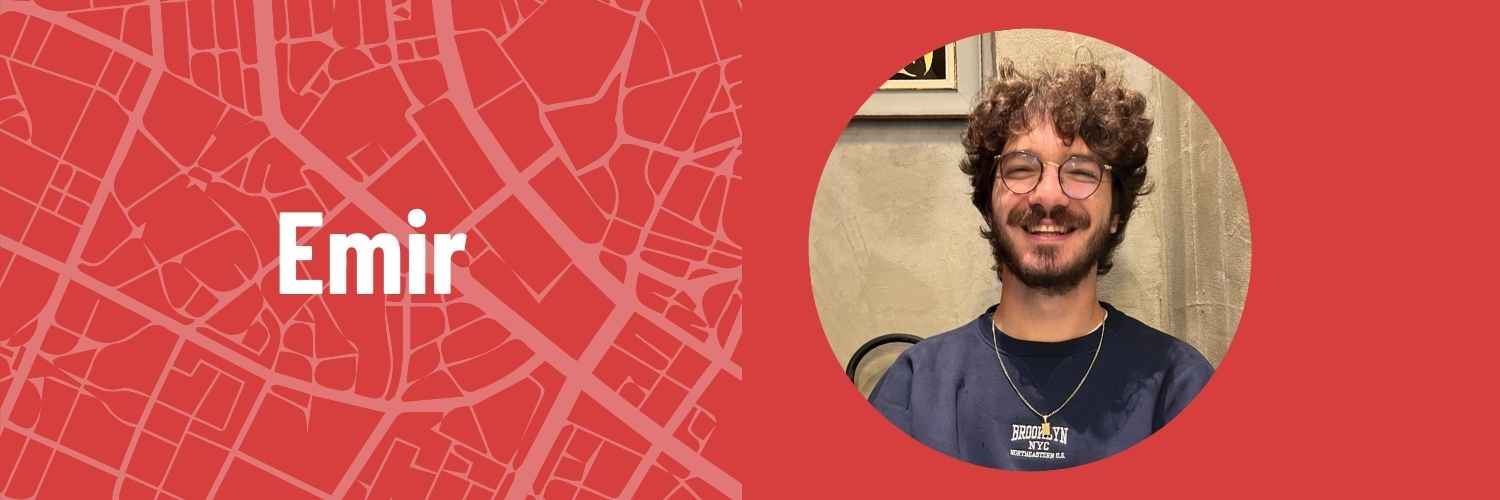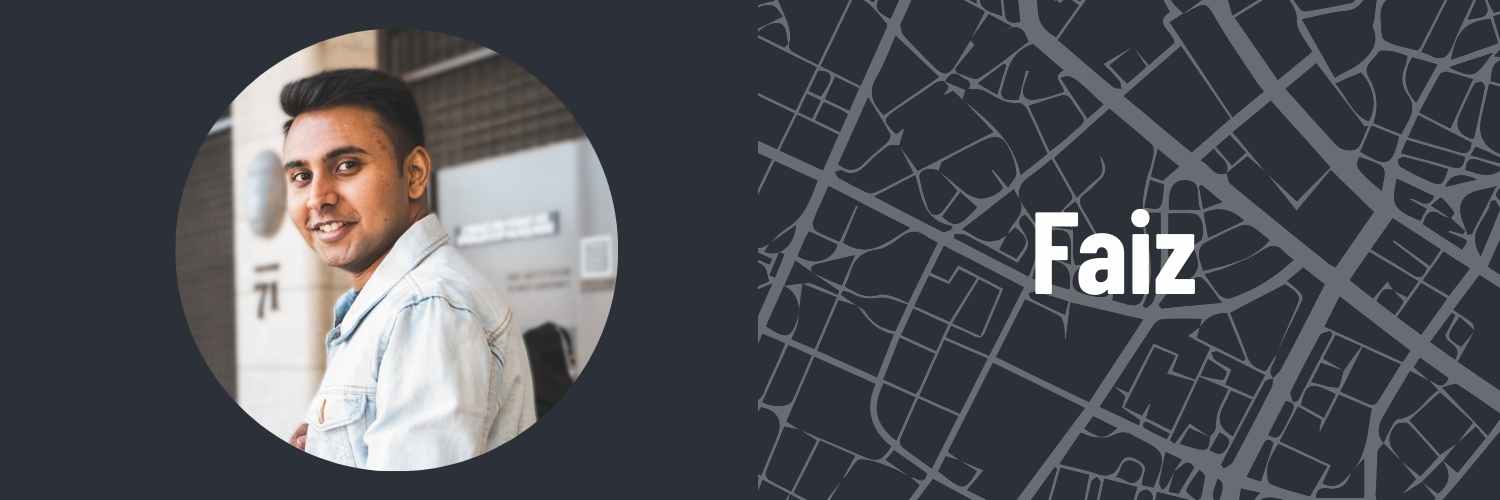News — 27 March, 2025
Open Source Contributor Journeys into HOT - could you be the next one?

Discover the inspiring journeys of Emir and Faiz, two tech contributors making a real impact with the Humanitarian OpenStreetMap Team (HOT). From Python packages to user-centered design, their stories show how open source skills can power humanitarian change. Could you be the next to join HOT’s open source movement?
Hi everyone, Petya here - Tech Partnership and Engagement Lead at the Humanitarian OpenStreetMap (HOTOSM). As an open source advocate, community engager and somebody who is very passionate about the role open source community/contributors play, I am so excited to finally bring to life some of the stories of the contributors we don’t often hear from - those are our tech contributors. Instead of me explaining, I’ll let you hear directly from two of them: Emir and Faiz. Each one of them has their own unique story and perspective. I had the chance to chat with them and asked a few questions.
Each journey is different. Every contribution matters. I hope their stories inspire you to contribute – or at least spark your curiosity about how you can get involved!
Emir’s journey into HOTOSM

What is your name, where you feel like home, current role.
My name is Emir. I’m a freelance software engineer currently based in Novara, Italy.
How did you start your journey into tech and open source?
I honestly feel like I was born using a computer. Then my high school computer science teacher showed me what was possible, and from there I started exploring the tech space by following my interests. For me, open-source is the place where I go when I don’t even know what questions I should be asking. It felt nice to finally be the one contributing this time instead of just consuming.
How did you find out about HOT? What was your journey/ what brought you into HOT?
I discovered HOT through ChatGPT in September 2023.
I’ve always been fascinated by nature and mountains - as a kid, I remember watching a TV show about Australian firefighters working in rugged environments, clearing mountain debris and conducting rescue operations. That early interest stayed with me. In 2023, I was looking to find an overlap between being a computer nerd and a nature enthusiast.
While researching possibilities through ChatGPT, I discovered the Humanitarian OpenStreetMap Team (HOT). I reached out to Sam Woodcock on LinkedIn about geospatial work, we had a brief exchange, and after a year. I contacted Sam again about contributing to HOT’s projects. What stood out was how welcoming Sam was. This positive reception made all the difference in my decision to get involved with HOT.
What was your contribution to HOT - can you tell us a bit more.
My contribution to HOT involved creating a Python package for simple city-level reverse geocoding using PostGIS. The journey began when I spotted an issue Sam had marked as “good first issue” on GitHub, where he had outlined both a problem and a potential solution.
After expressing interest, I immediately started working on it. I tested the feasibility of the proposed solution, gathered comparative data against existing alternatives, and presented my findings to Sam. What followed was a collaborative process of technical discussions that helped shape the solution. We worked through multiple iterations, addressing challenges and refining the approach until we finally produced a working package that met HOT’s needs.
The project is now available at https://github.com/hotosm/pg-nearest-city. Beyond the technical aspects, the human connection with Sam was invaluable. His guidance and support throughout the development process made this contribution particularly meaningful.
What is the one advice you would give to a newcomer wanting to contribute to HOTOSM?
Do it, but do it with intention. Contributing to an open-source project like HOTOSM’ ones gives you access to production-grade systems from which you can learn significantly. Nobody expects you to be perfect from day one - what matters is putting in genuine effort and maintaining clear communication. The beauty of this exchange is that both sides gain significantly from it: you develop professional skills in a real-world context while helping advance humanitarian work that makes a tangible difference in the world.
Faiz’s journey into HOTOSM

What is your name, where you feel like home, current role.
Faiz Jamdar, living in Melbourne, Australia. I am a marketing and tech adviser for nonprofits.
How did you start your journey into tech and open source?
I’m super passionate about the tech nonprofit space and wanted to get more experience. Tech nonprofits have the unique ability to solve problems for markets that are missed by large tech companies. Profit focussed mapping services don’t serve the one billion people globally that live in remote or resource poor areas. I reached out to HOTOSM and was fortunate enough to be involved in the cutting edge fAIr tool.
My professional skillset includes marketing, IT consulting and UX/UI design.
I helped re-design this AI powered tool, to speed up onboarding and reduce the complexity for non-technical users.
How did you find out about HOT? What was your journey/ what brought you into HOT?
I found HOT through a tech nonprofit directory. I then sent an email to HOT, asking how I can contribute my skills. HOT is one of the most impactful and largest nonprofits globally so I was most excited to support HOT, out of all the opportunities I was offered.
What was your contribution to HOT - can you tell us a bit more? What was your experience during the contribution period? How did you feel?
Between January and March 2024, I collaborated asynchronously over a twelve-week period redesigning the fAIr UX/UI, bringing a strong user-centric lens to the project. Through user interviews, regular calls with Senior Product Owner Omran Najjar, and an ideation workshop with six community members, I identified that user onboarding was slow due to excessive customisation options. My main achievement was simplifying the design by reducing visible options, making the tool easier for non-technical users while still allowing data scientists to access hidden advanced settings for their complex needs. This case study contains more detailed information: https://faizjamdar.com/project/hot-osm
I was very impressed at how collaborative HOT is, especially given its size. Everyone I spoke to was passionate about the mission, was generous with their time and gave thoughtful insights. I felt very welcomed into the community and well supported by Petya and the devs (Omran and Kshitij).
What is the one advice you would give to a newcomer wanting to contribute to HOTOSM?
Don’t be afraid to ask for help. Through LinkedIn I found someone who worked at HOT and had a UX background (Emilio, senior PO). So I reached out to him and he gave great insights on making the fAIr interface more accessible and connecting it to the wider HOT OSM ecosystem.
***
Thank YOU again to all of you who volunteer your time and contribute. And last, but not least thanks to the amazing HOT tech team who work tirelessly and by whom I am inspired every day! Your dedication and keeping to our core value of openness and putting people first. Collaboration with our volunteers won’t happen without YOU and the approach you have! I have worked with different developers and tech teams and having a welcoming open source community and maintainers is not a given, so wanted to say I appreciate you all.
Hope you enjoyed the stories and maybe they inspired you to share your story? If you have contributed to HOT’s open source projects, I would love to hear from you - email petya.kangalova@hotosm.org
If you have not yet contributed to HOT, you can do that by looking for good-first issues in our GitHub repositories. New to GitHub? Check out the comprehensive GitHub Guide to HOTOSM.
Sign up to our HOT tech newsletter and register for our monthly Tech and Innovation working groups.

